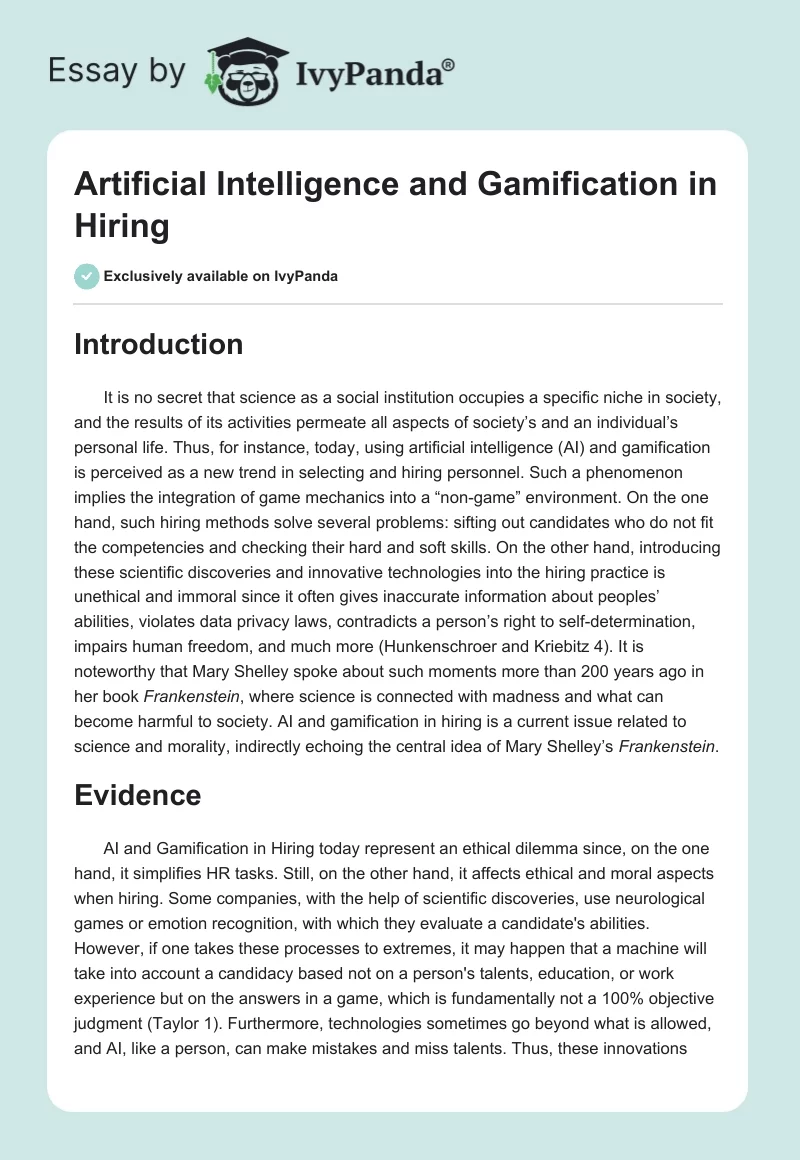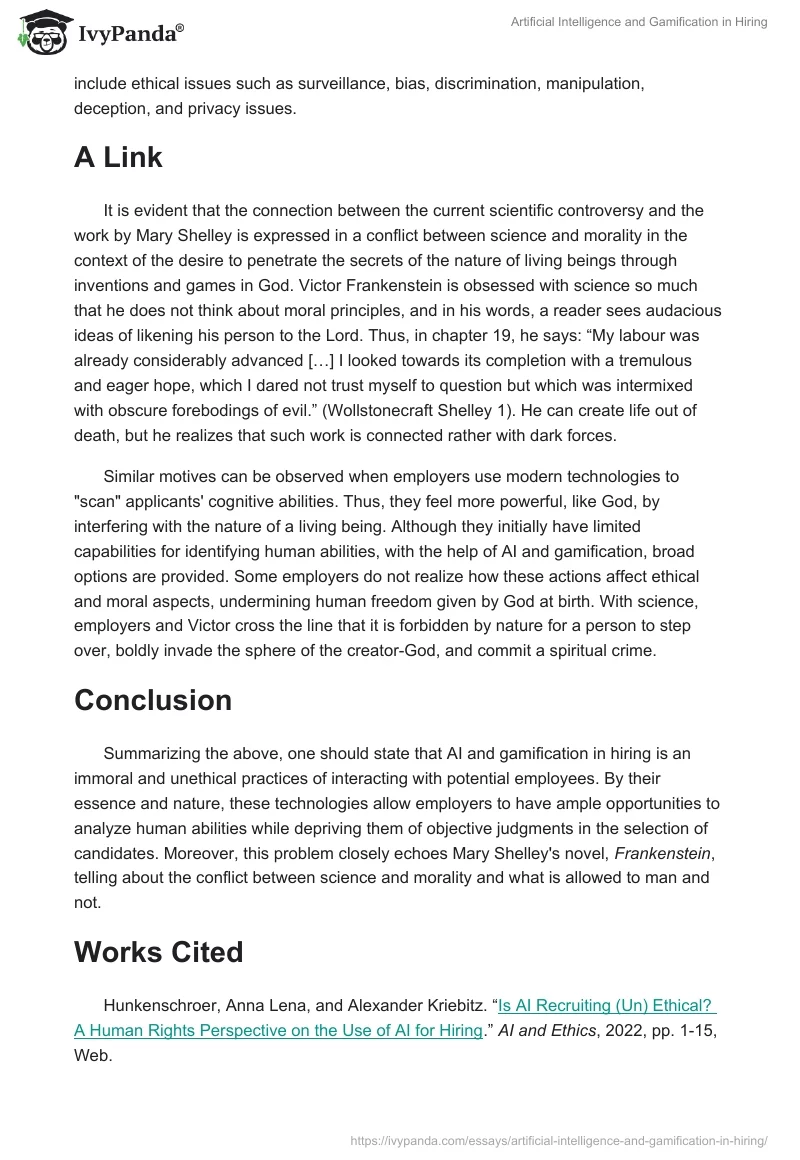Introduction
It is no secret that science as a social institution occupies a specific niche in society, and the results of its activities permeate all aspects of society’s and an individual’s personal life. Thus, for instance, today, using artificial intelligence (AI) and gamification is perceived as a new trend in selecting and hiring personnel. Such a phenomenon implies the integration of game mechanics into a “non-game” environment.
On the one hand, such hiring methods solve several problems: sifting out candidates who do not fit the competencies and checking their hard and soft skills. On the other hand, introducing these scientific discoveries and innovative technologies into the hiring practice is unethical and immoral since it often gives inaccurate information about peoples’ abilities, violates data privacy laws, contradicts a person’s right to self-determination, impairs human freedom, and much more (Hunkenschroer and Kriebitz 4).
It is noteworthy that Mary Shelley spoke about such moments more than 200 years ago in her book Frankenstein, where science is connected with madness and what can become harmful to society. AI and gamification in hiring is a current issue related to science and morality, indirectly echoing the central idea of Mary Shelley’s Frankenstein.
Evidence
AI and Gamification in Hiring today represent an ethical dilemma since, on the one hand, it simplifies HR tasks. Still, on the other hand, it affects ethical and moral aspects when hiring. Some companies, with the help of scientific discoveries, use neurological games or emotion recognition, with which they evaluate a candidate’s abilities. However, if one takes these processes to extremes, it may happen that a machine will take into account a candidacy based not on a person’s talents, education, or work experience but on the answers in a game, which is fundamentally not a 100% objective judgment (Taylor 1). Furthermore, technologies sometimes go beyond what is allowed, and AI, like a person, can make mistakes and miss talents. Thus, these innovations include ethical issues such as surveillance, bias, discrimination, manipulation, deception, and privacy issues.
A Link
It is evident that the connection between the current scientific controversy and the work by Mary Shelley is expressed in a conflict between science and morality in the context of the desire to penetrate the secrets of the nature of living beings through inventions and games in God. Victor Frankenstein is obsessed with science so much that he does not think about moral principles, and in his words, a reader sees audacious ideas of likening his person to the Lord. Thus, in chapter 19, he says: “My labour was already considerably advanced […] I looked towards its completion with a tremulous and eager hope, which I dared not trust myself to question but which was intermixed with obscure forebodings of evil.” (Wollstonecraft Shelley 1). He can create life out of death, but he realizes that such work is connected rather with dark forces.
Similar motives can be observed when employers use modern technologies to “scan” applicants’ cognitive abilities. Thus, they feel more powerful, like God, by interfering with the nature of a living being. Although they initially have limited capabilities for identifying human abilities, with the help of AI and gamification, broad options are provided. Some employers do not realize how these actions affect ethical and moral aspects, undermining human freedom given by God at birth. With science, employers and Victor cross the line that it is forbidden by nature for a person to step over, boldly invade the sphere of the creator-God, and commit a spiritual crime.
Conclusion
Summarizing the above, one should state that AI and gamification in hiring is an immoral and unethical practices of interacting with potential employees. By their essence and nature, these technologies allow employers to have ample opportunities to analyze human abilities while depriving them of objective judgments in the selection of candidates. Moreover, this problem closely echoes Mary Shelley’s novel, Frankenstein, telling about the conflict between science and morality and what is allowed to man and not.
Works Cited
Hunkenschroer, Anna Lena, and Alexander Kriebitz. “Is AI Recruiting (Un) Ethical? A Human Rights Perspective on the Use of AI for Hiring.” AI and Ethics, 2022, pp. 1-15, Web.
Taylor, Michelle. “Top 10 Ethical Dilemmas in Science for 2020.” Laboratory Equipment, Web.
Wollstonecraft Shelley, Mary. Frankenstein or, The Modern Prometheus. Project Gutenberg, 1993. Project Gutenberg, Web.

 4.50
4.50
